Rusingoryx: The antelope with a dinosaur nose
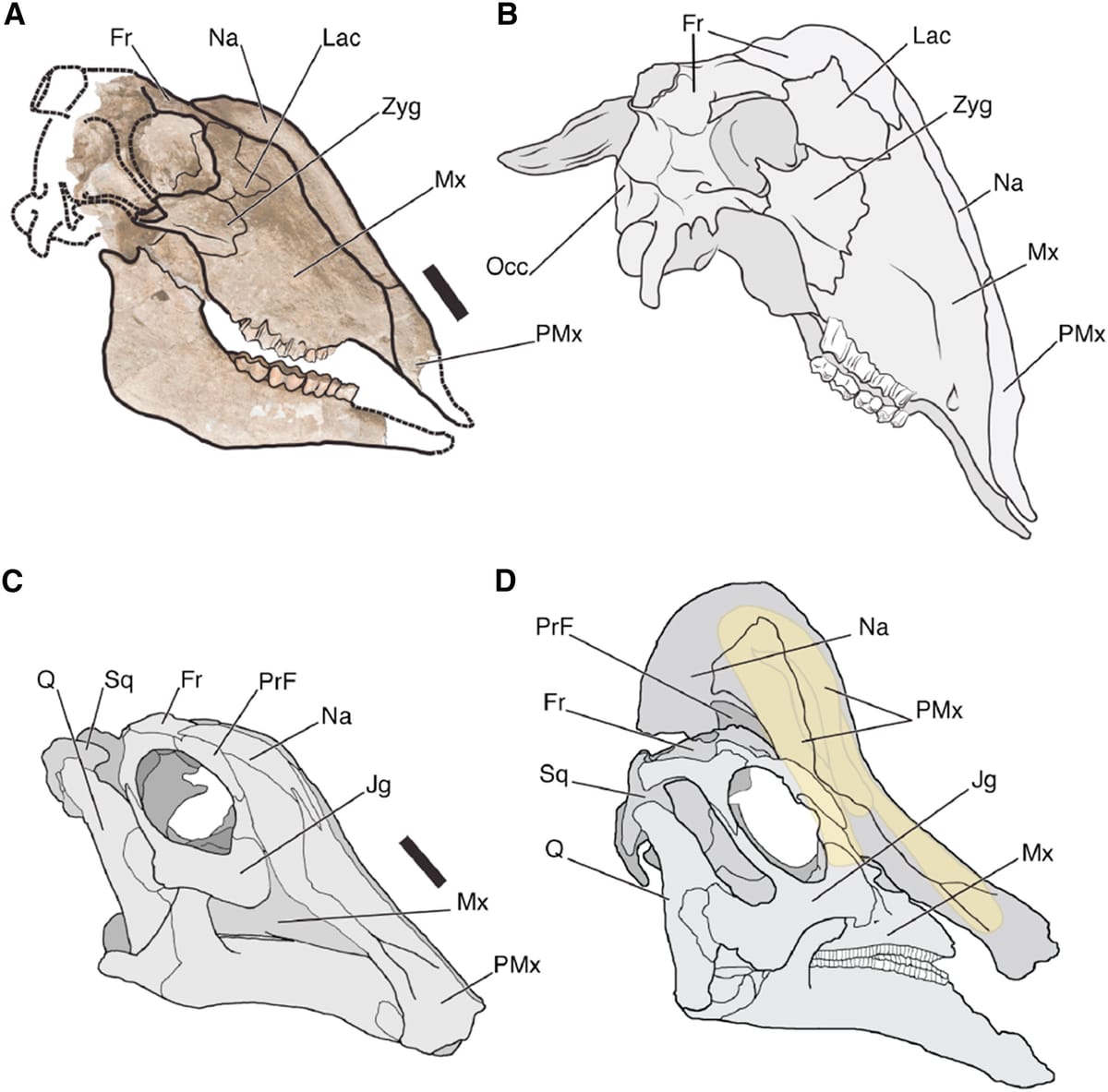
In February (2016) a paper was published online in Current Biology that described the nasal passages of an extinct wildebeest-like mammal, Rusingoryx. You may remember wildebeests from The Lion King:
‘Oh, look sire the herd is on the move’:
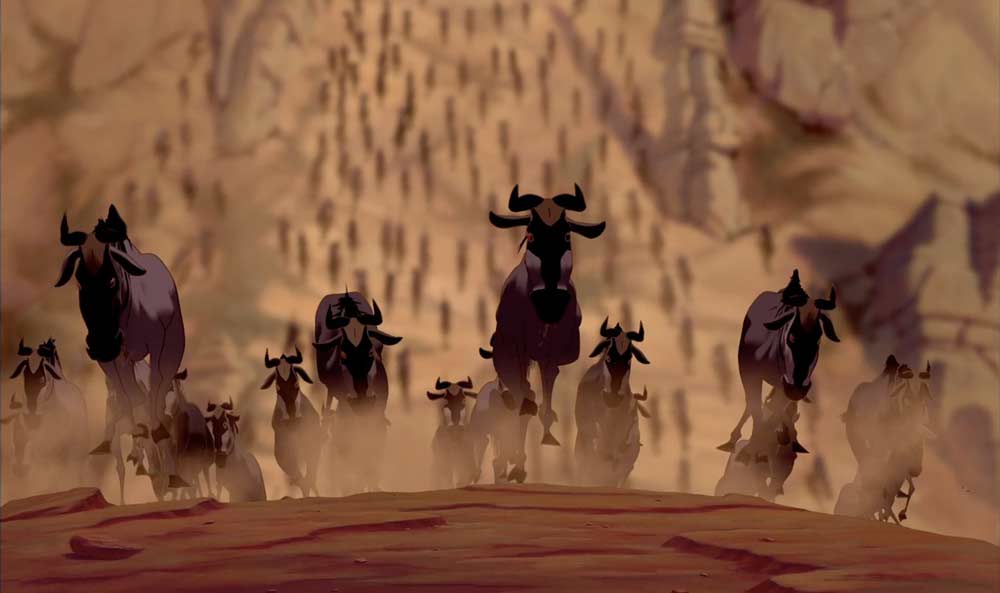
© Disney
This extinct form is different, though, in a rather unique way. Most mammals have a nasal passage (thats the tube your nose makes from the outside to where it attaches to your throat) that goes relatively straight back.
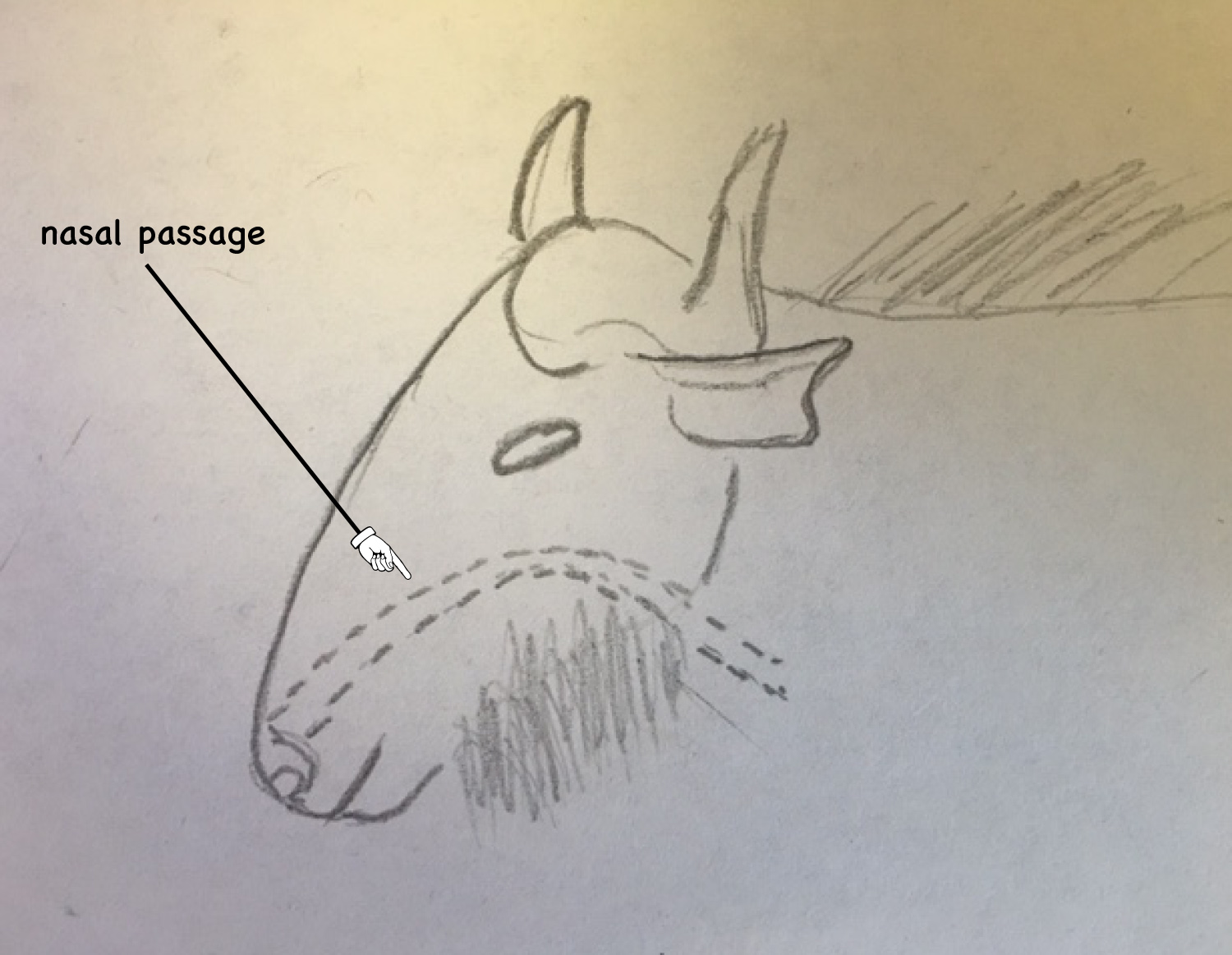
Rusingoryx, instead, has a nasal passage that curves up, goes between the eyes, and then connects to the throat.
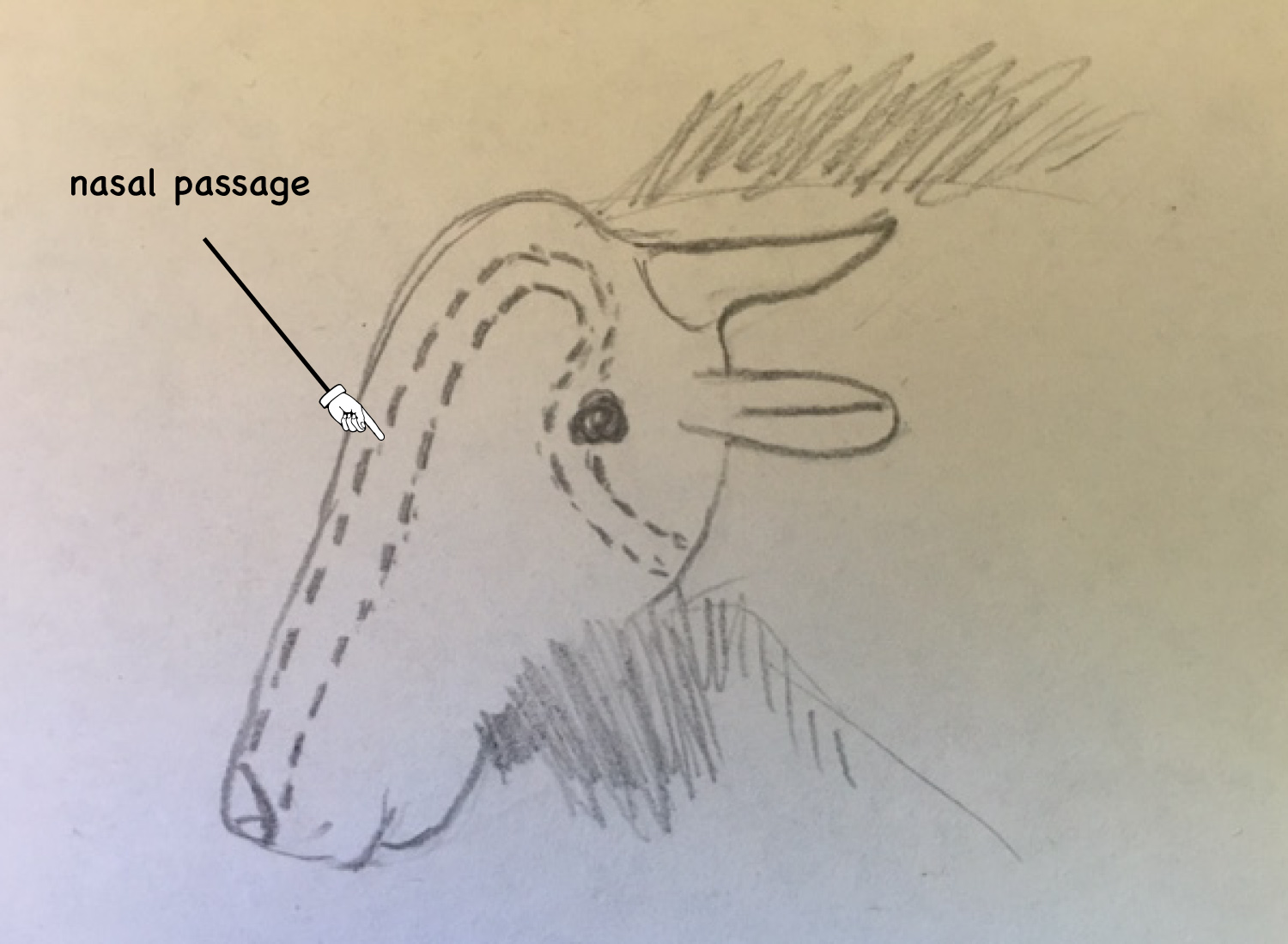
Below you can see this in the actual fossil. The images in A and E are photos of the real fossils (the face is pointing to the right). The images in B and F are CT scans of the fossil, with the nasal passage highlighted in yellow.

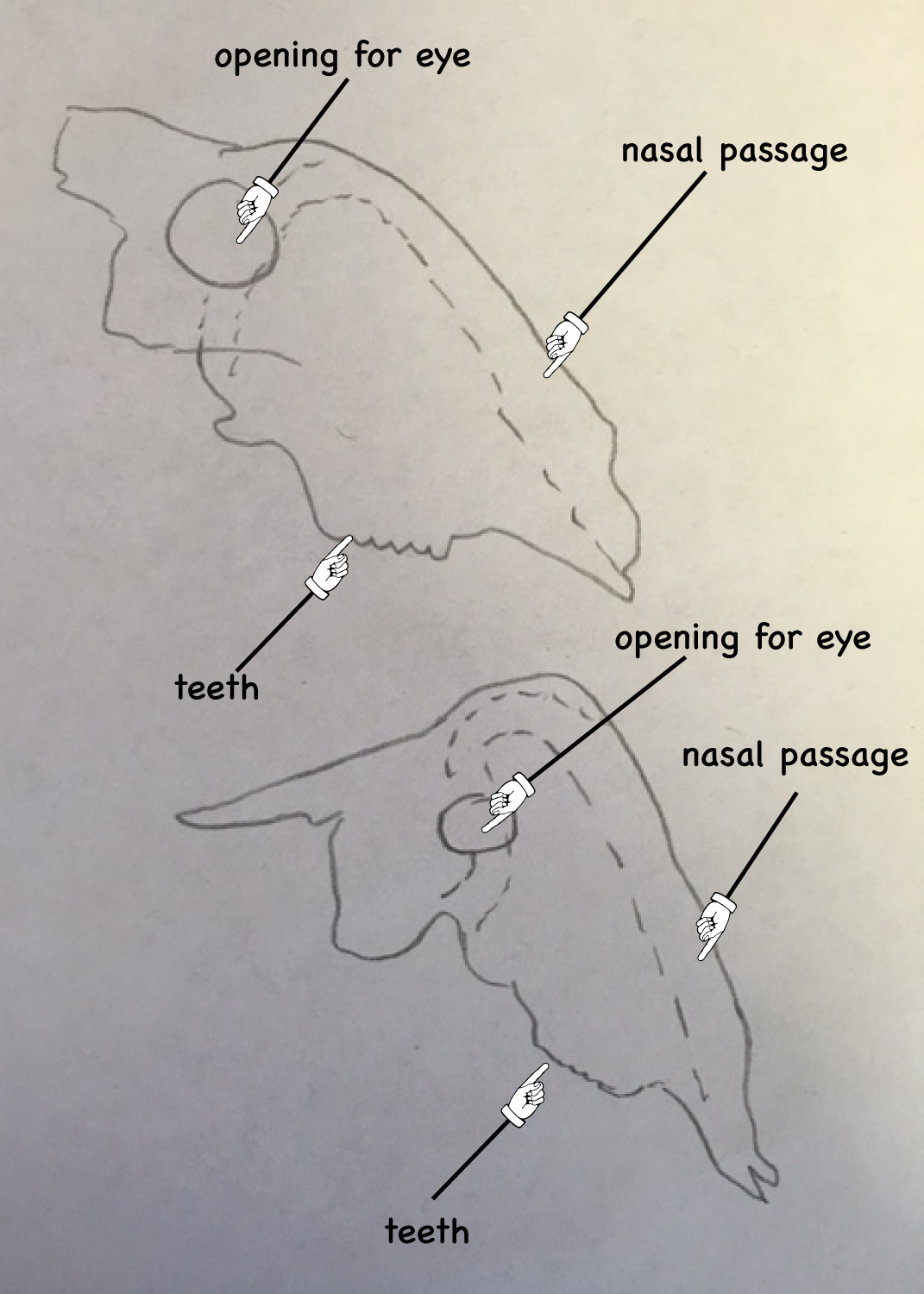
What a strange way to have your nose! This is not the first time we’ve found animals that have this. Some dinosaurs, called Lambeosaurines, have this, too! Lambeosaurines (Lam-BE-oh-saur-ines; named for Mr. Lawrence M. Lambe, a Canadian paleontologist) is a long name to describe a group of dinosaurs known for having these complicated nasal passages. One example of a specific Lambeosaurine, a Parasaurolophus, appeared in The Lost World:
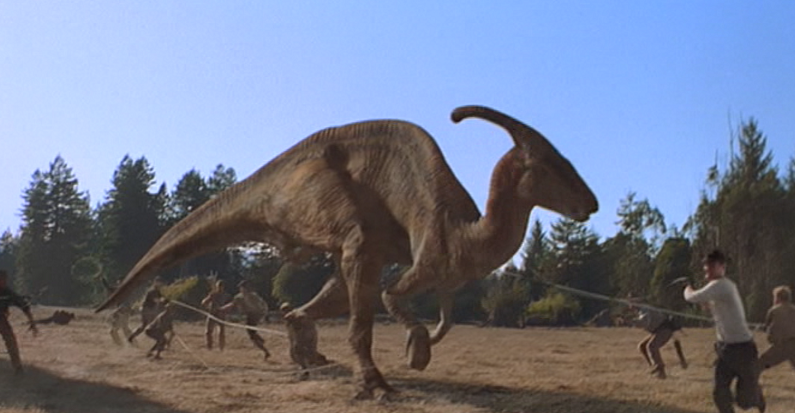
© Universal Studios
And Perry Parasaurolophus from Dinosaur Train:
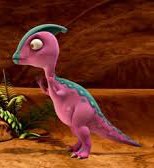
© PBS
These dinosaurs are thought to have blown air through those passages to create different tones or sounds. Each type of Lamebosaurine, with it’s unique nasal passage shape, could create a different tone. These dinosaurs could use their noses to communicate with each other over long distances – an important characteristic for animals that live in open habitats and in spread out groups.
Rusingoryx was probably using its complicated nasal passage in the same way as these dinosaurs. The study included three specimens (specimens = examples) of different ages and showed how these passages grew during the animal’s life. Their development is similar to the way the passages grew in Lambeosaurine dinosaurs.
When two unrelated animals show similar characteristics it is called convergence. Convergence happens when 2 or more unrelated animals develop similar features because of similarity of environments or because the feature is being used in the same way. For example, the flippers of dolphins, sea turtles, and penguins are all convergent because they look and function the same way, even though the animals are distantly related.
Dolphin: Turtle: Penguin:
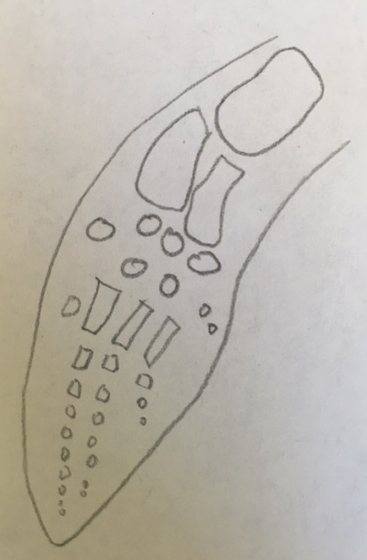

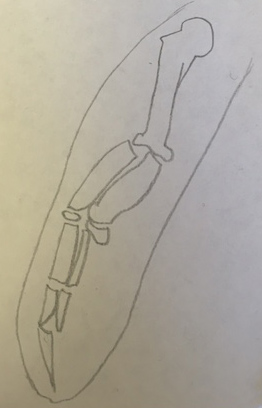
To summarize this study:
- a wildebeest-like animal, Rusingoryx, had strange, complicated nasal passages
- these nasal passages were very like those in Lambeosaurine dinosaurs
- in Lambeosaurines and in Rusingoryx, the nasal passages were probably used for producing sounds to communicate with other members of the same species
- when 2 or more unrelated animals show similar features, it’s called convergence
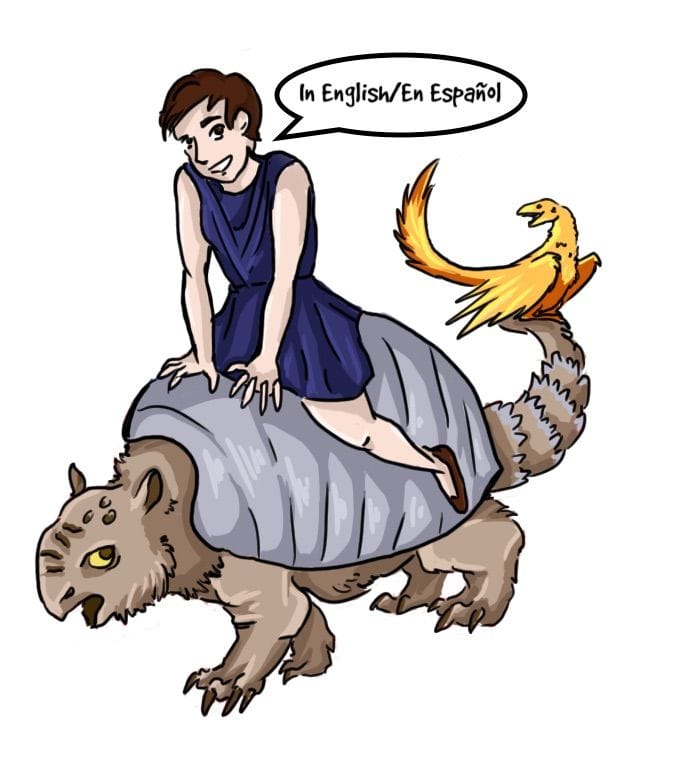
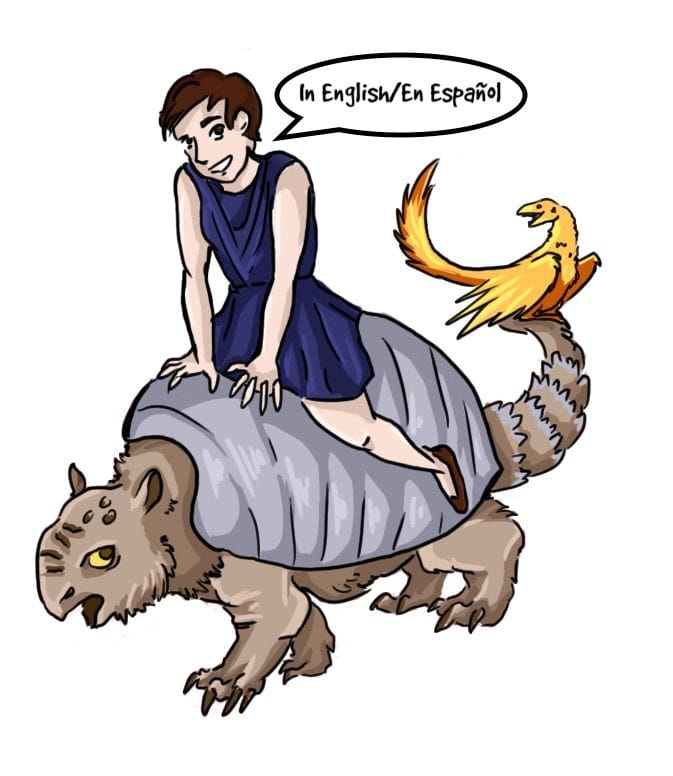
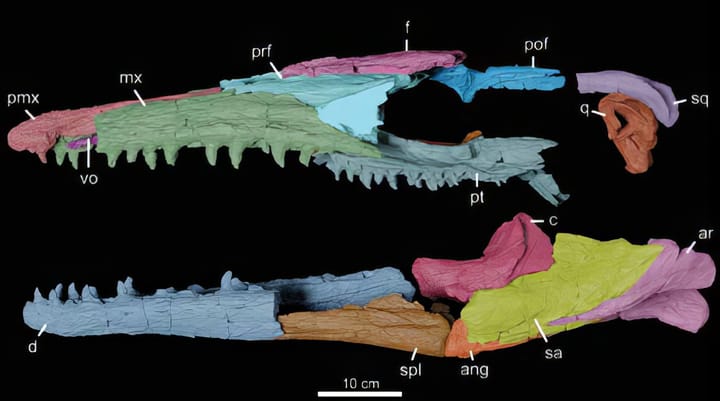
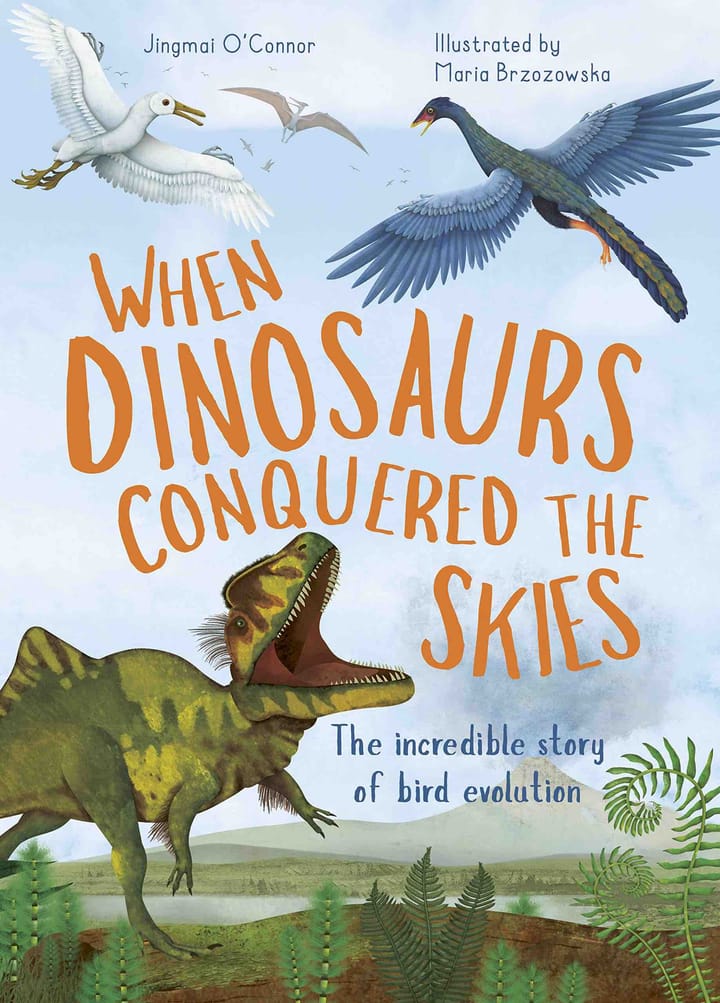

Comments ()